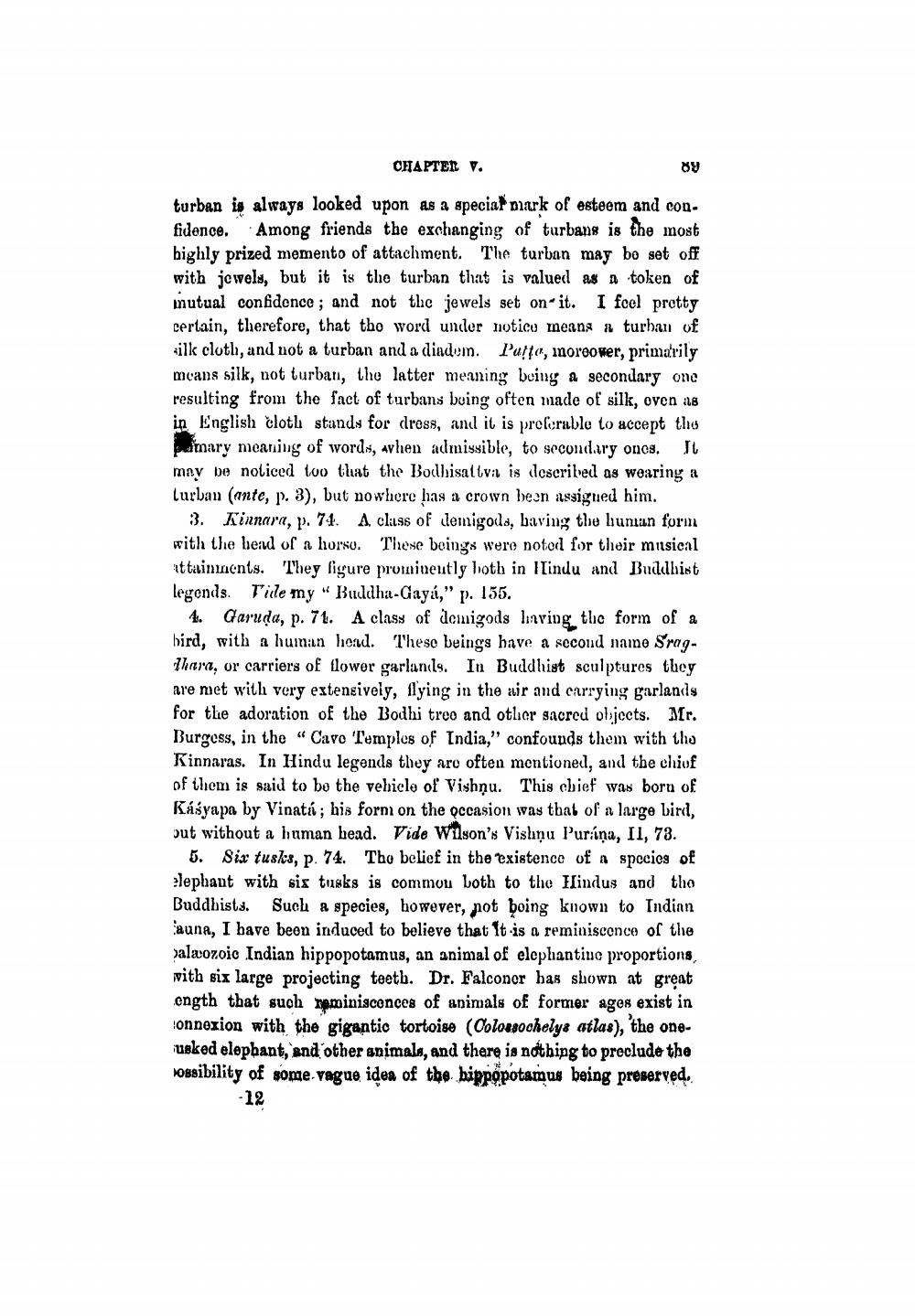________________
CHAPTER V.
turban is always looked upon as a special mark of esteem and confidence. Among friends the exchanging of turbans is the most highly prized memento of attachment. The turban may be set off with jewels, but it is the turban that is valued as a token of mutual confidence; and not the jewels set on it. I feel pretty certain, therefore, that the word under notice means a turban of silk cloth, and not a turban and a diadem. Patte, moreover, primarily means silk, not turban, the latter meaning being a secondary one resulting from the fact of turbans boing often made of silk, oven as in English cloth stands for dress, and it is preferable to accept the
mary meaning of words, avhen admissible, to secondary ones. It may be noticed too that the Bodhisattva is described as wearing a turban (ante, p. 3), but nowhere has a crown been assigned him.
3. Kinnara, p. 74. A class of demigods, having the human form with the head of a horso. These beings were noted for their musical attainments. They figure prominently both in Hindu and Buddhist legends. Tide my "Buddha-Gayá," p. 155.
4.
Garuda, p. 74. A class of demigods having the form of a bird, with a human head. These beings have a second name SragThara, or carriers of flower garlands. In Buddhist sculptures they are met with very extensively, flying in the air and carrying garlands for the adoration of the Bodhi treo and other sacred objects. Mr. Burgess, in the "Cave Temples of India," confounds them with the Kinnaras. In Hindu legends they are often mentioned, and the chiof of them is said to be the vehicle of Vishnu. This chief was born of Kasyapa by Vinatá; his form on the occasion was that of a large bird, out without a human head. Vide Wilson's Vishnu Purána, II, 73.
5. Six tusks, p. 74. The belief in the existence of a species of elephant with six tusks is commou both to the Hindus and the Buddhists. Such a species, however, not boing known to Indian auna, I have been induced to believe that It is a reminiscence of the paleozoic Indian hippopotamus, an animal of elephantine proportions, with six large projecting teeth. Dr. Falconer has shown at great ength that such reminiscences of animals of former ages exist in onnexion with the gigantic tortoise (Colossochelys atlas), usked elephant, and other animals, and there is nothing to preclude the ossibility of some vague idea of the hippopotamus being preserved.
the one
-12
By




